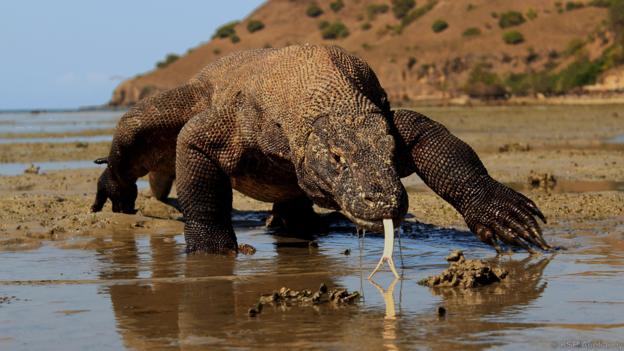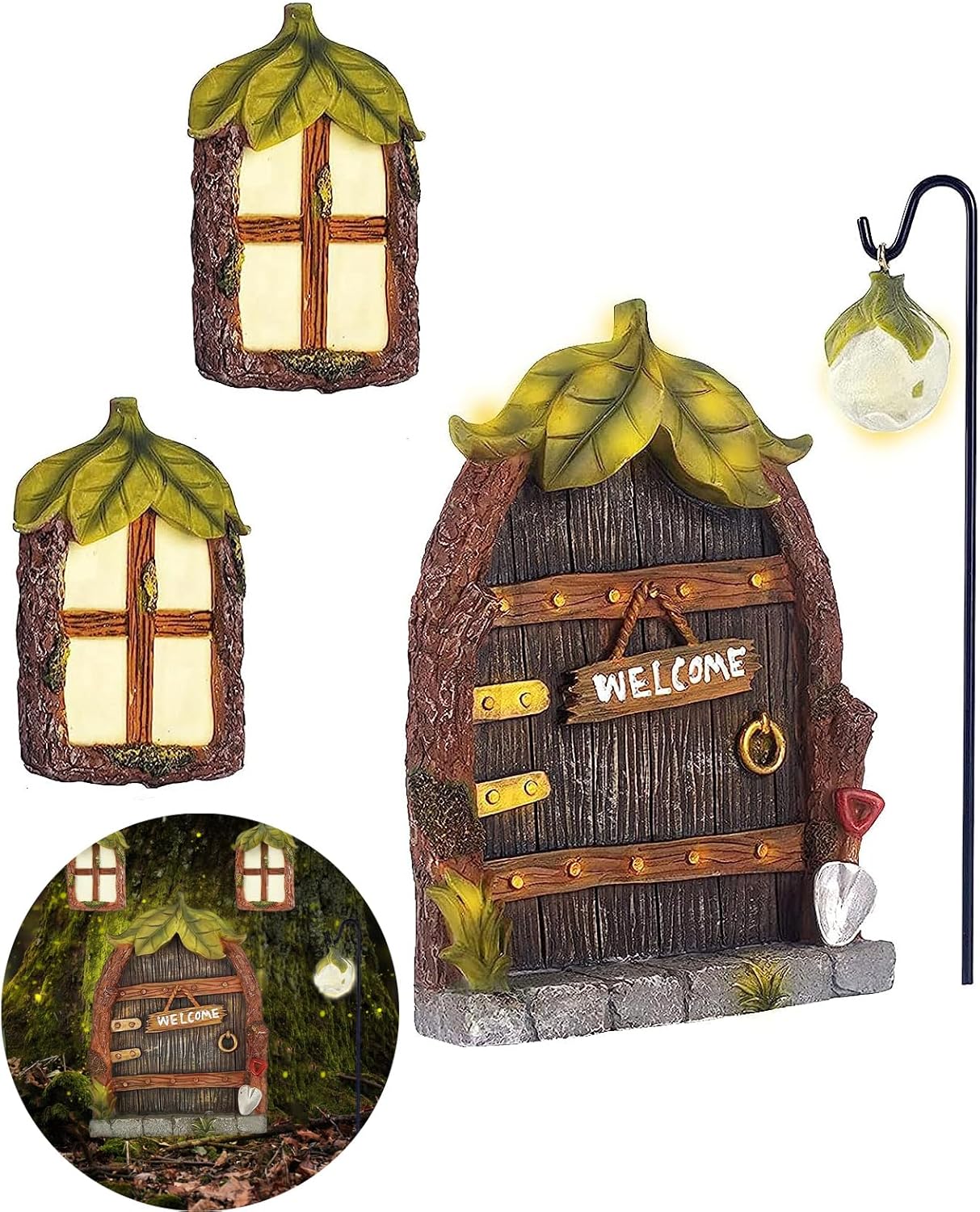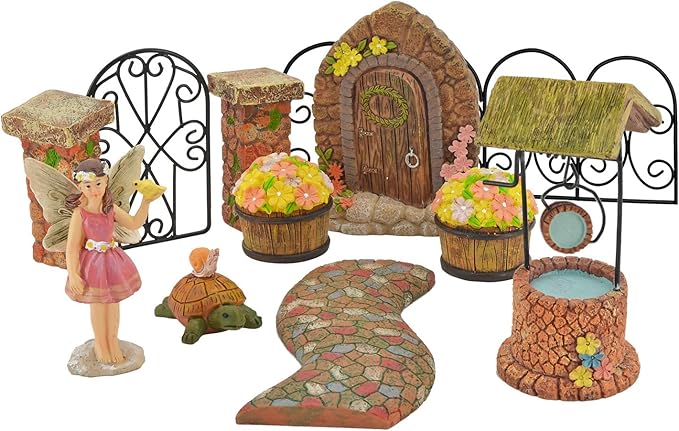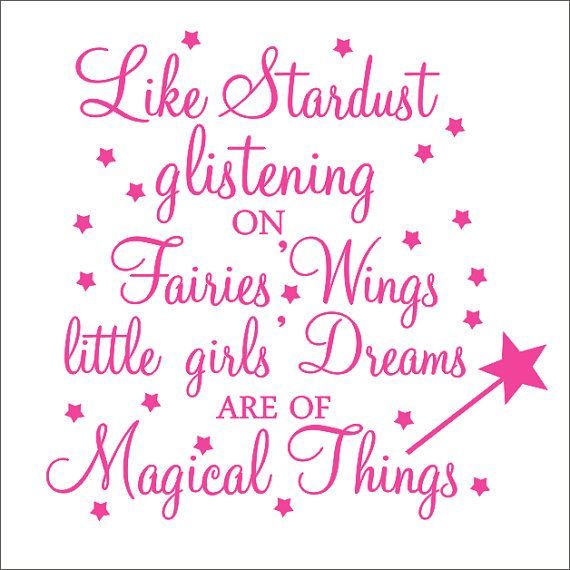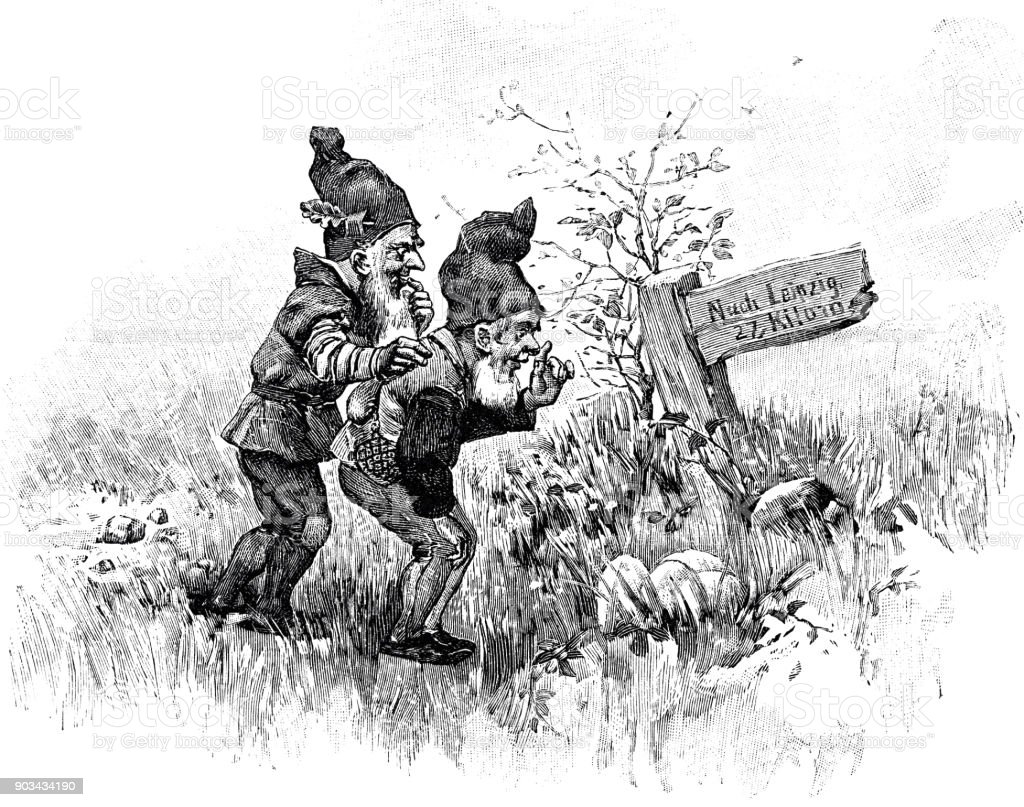- Home
- Fairy Blog
- Fairy Cakes
- Fairy Quotes
- Safety Dance
- What is a Fairy?
- Are Fairies Real?
- Faeries
- What are the Fae?
- Fairy History
- Origin of Fairies
- Fairies in Folklore
- Pixies
- Pixie Fairy Differences
- Gothic Fairies
- Tooth Fairy
- Fairy Festivals
- Fairy Gardens
- Fairy Garden Accessories
- Fairy Forests
- Fairy Poems
- Fairy Tales
- Fairy Tale Origins
- Classic Fairy Tales
- 24 Fairy Tales
- About Fantasy Creatures
- Dragons
- Dwarves
- Elves
- Gnomes
- Leprechauns
- Mermaids
- Unicorns
- Free Fairy Art
- Fairy Coloring Pages
- Chinese Dragon Art
- How to Draw a Dragon
- Chinese Dragon Drawing
- Dragon Coloring Pages
- Fairy Tattoo Ideas
- About Us
- Contact Us
- Disclaimer
- Privacy Policy
Dragons Are They Real?
Dragons are they Real - Yes! Dragons are alive on a far-off island in the Java Sea. Ancient maps and now more modern ones mark this area: Danger! Live Creatures.
Dragons are they Real, look at these creatures, they are called Komodo Dragons. Their home is on an archipelago in the Lesser Sunda Islands in the Java Sea. They are not giant like the images of old, but they get to be about ten feet kong and weigh over 150 pounds. They can't breath fire, but can tun faster than 25 MPH and bring down a Water Buffalo or Deer. When they bite their prey, they inject a poison that causes the animal to slowly bleed to death.
Dragons are they REAL?
In Hollywood ?
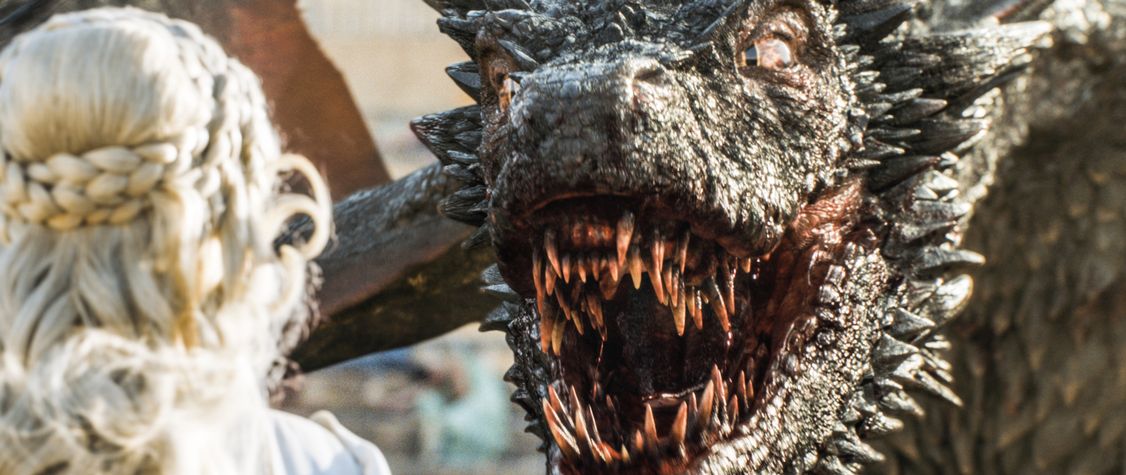
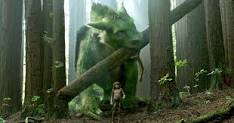
Hollywood versions of these fantasy Dragons today.
Above is a scene from the HBO series Game Of Thrones. To the right is from the movie Pete' Dragon They appear to be quite different from the picture of the live Komodo dragon.
Accessories for your Fairy Garden!
Are you building a Fairy Garden? This door, windows and lantern would look super cute - CLICK HERE for more information and to order on Amazon.
Dragons Are They Real?
Historic Versions
These Mythical creatures are some of the oldest. They appear in the cultures of almost all ancient societies. In the earliest times, they were shown with the Great Mother or the water god or the warrior sun god. They had the power to be either bad or good and were considered to be the most powerful creatures in the world.
You can read more about the history of dragons here.
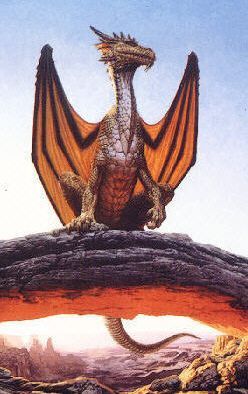 Medieval Dragon
Medieval DragonTales from many cultures, have created these great beasts giving them many different attributes. The images that we see from history, are made up of different parts of many animals. Most seem to have a lot of alligator and snakelike characteristics. Most have a lion's head plus maybe lion's front legs and eagle's feet. Some have wings and can breath fire.
In America, when we think of these creatures, the image we have is of the European or medieval ones from literature.
You can read more about dragons in medieval times here.
These Ancient Medieval Dragons are sometimes referred to as European or Draco. They are portrayed as evil, and fierce man-eating reptiles that have a tail and wings. They have the magical ability to fly and breath fire. These characteristics tend to be very dangerous and can literally destroy many of the Middle Age villages.
Dragons are they Real - According to Western folk tales from the renaissance, these mythical creatures have some strong magical abilities. They collect treasure and gem stones from the villages they sack and guard it very ferociously usually in a cave.
Chinese Dragons
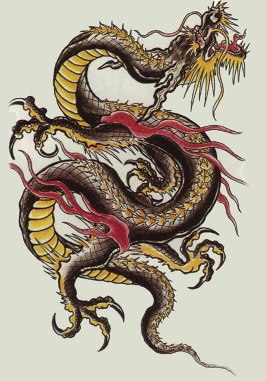 Chinese Dragon
Chinese DragonIn China, these fantasy creatures were believed to possess powers that were related to nature and were associated with natural elements like rainfall, droughts and storms. Consequently, in Chinese art, dragon is a revered symbol.
The Lung dragon, in Chinese mythology, is one of four main animal figures that are seen as or rather believed to be well-meaning, a symbol of good luck. Because of its obviously powerful image, it became a symbol of the Chinese emperor.
You can read more about Chinese Dragons here.
Japanese Dragons
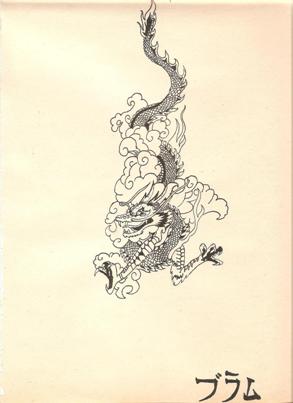 Japanese Dragon Art
Japanese Dragon ArtIn Japan the image is very similar to Chinese images. They are usually shown as large wingless snake-like creatures with large feet that have long claws. Most of the legends and stories have them associated with the sea or lakes or rivers and even rainfall.
Physical descriptions of them are similar to the Chinese and Korean images except for some slight differences. The Japanese have three claws instead of four and they do not always have wings.
You can read more about Japanese Dragons here.
Definitions
Webster's Definition : drag-en n dracon-,draco serpent
1: archaic: a huge serpent
2: a fabulous animal usually represented as a monstrous winged and scaly serpent or saurian with a crested head and enormous claws.
Definitions Encarta 98: A legendary reptilian monster similar in form to a crocodile and usually represented as having wings, huge claws, and a fiery breath.
Dragons have often been associated with divine entities or natural phenomena. They are creatures of tremendous power and influence, capable of shaping the world around them. From the dragons of ancient Mesopotamia and the Far East to the dragon-like creatures of the indigenous cultures of the Americas, these beings often represent the untamed forces of the world.
The duality of dragons, as creatures that can be both benevolent and malevolent, is a recurring theme in many mythologies. In some cultures, they are seen as wise and noble beings, symbols of luck and prosperity. In others, they are feared as monsters and bringers of calamity. This dichotomy reflects our own human nature, embodying our fears, hopes, and aspirations.
Their enduring appeal and cultural significance can be seen in the fact that dragons continue to feature prominently in modern literature, film, and popular culture. They continue to captivate our collective imagination, serving as powerful symbols of the primal, mysterious, and awe-inspiring aspects of existence.
In conclusion, the history of dragons is a captivating journey through the myths, legends, and folklore of various cultures across time. From the ancient civilizations of Mesopotamia, China, and India to the medieval folklore of Europe and beyond, dragons have continued to capture the human imagination. These mythical creatures have taken on diverse forms and attributes, symbolizing everything from wisdom and power to chaos and destruction.
You may be interested in our page on Chinese Dragon Art.
Click here to learn how to draw a Dragon!
Fairy Product of the Month
Design your own miniature fairy garden with this Fairy Garden Kit
CLICK HERE for more information and best price!
Recent Articles
-
Discover The Best Quotes About Fairies
Jul 08, 25 04:08 AM
We have collected all the best Quotes About Fairies that we can find - Discover some inspiration and wonder in the World of fairies! -
What Is A Fairy Cake? Is It A Cake That Fairies Eat?
Jul 06, 25 05:16 AM
We are often asked: What is a fairy cake? Do fairies eat it? Or is it a plain cake recipe? Find out here! -
What is a Gnome? Find Out Here!
Jul 05, 25 11:13 AM
What is a Gnome? We talk about the origins and history of gnomes.
